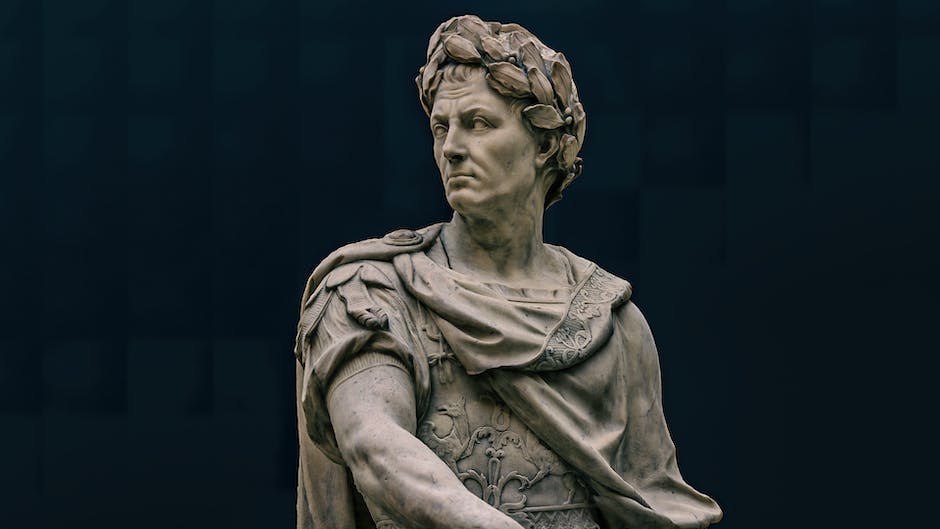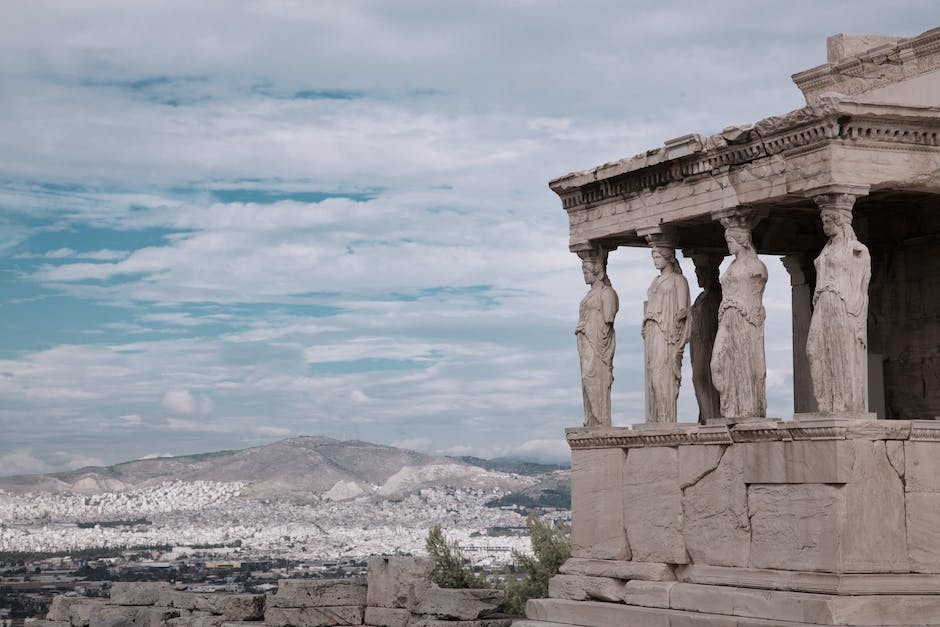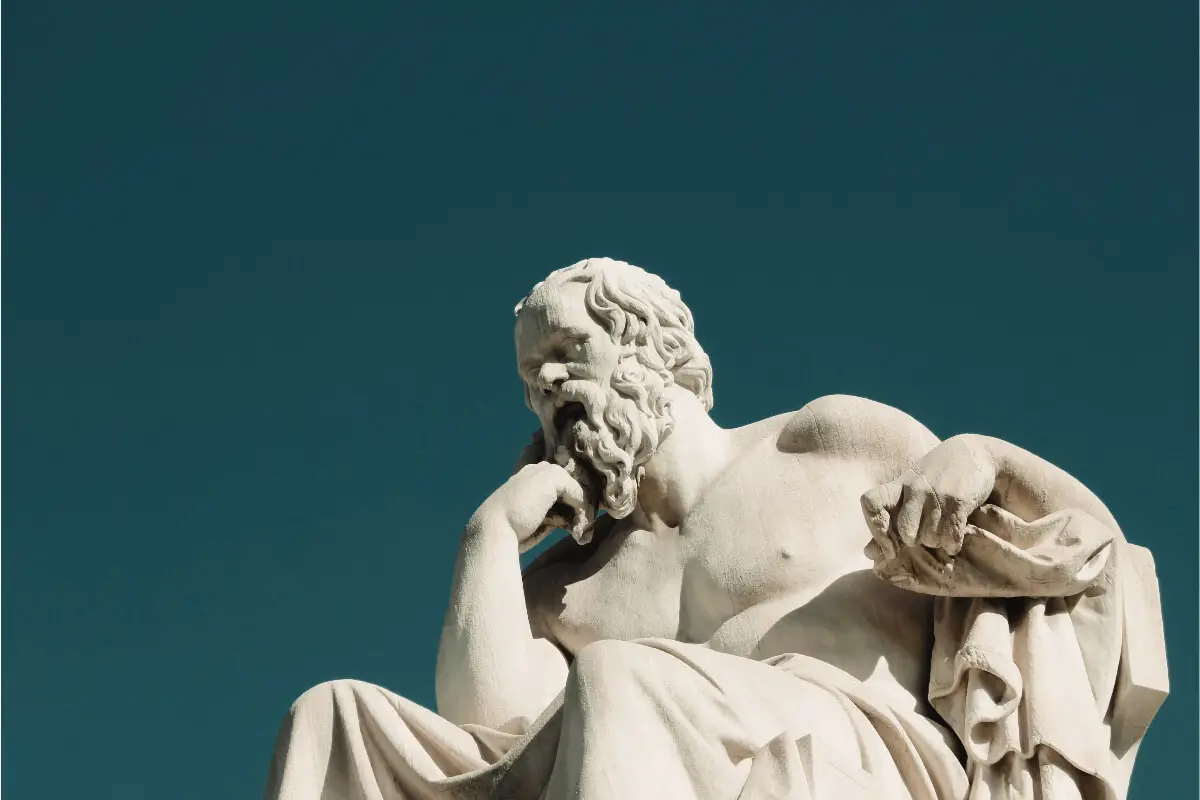From the simplest forms of stone carvings and terracotta figurines to the most intricate marble statues and bronze sculptures, ancient Greek sculpture boasts a rich and remarkably progressive history that has dramatically molded the contours of Western Art. This exploration delves into this fascinating journey, starting from the earliest beginnings through distinct historical epochs, including the Archaic, Classical, and Hellenistic periods.
Moreover, it spotlights the vital contributions of notable Greek sculptors such as Polykleitos, Phidias, Scopas, and Praxiteles, who, through their groundbreaking works and unique styles, have left an indelible mark on the world of art and have fueled the creative imaginations of artists and sculptors for generations.
Table of Contents
- Inception and Evolution of Greek Sculpture
- Significant Ancient Greek Sculptors
- Noteworthy Greek Sculptures
- Impact and Influence of Greek Sculpture
- Related Questions
Inception and Evolution of Greek Sculpture
Greek sculpture is a phenomenon that unfurled magnificently over the centuries, shaping and being shaped by the history and culture of Greece. The evolution of Greek sculpture not merely reflects the progression of aesthetic principles and artistic techniques but it also offers thrilling glimpses into the religious, political, and social atmosphere of a civilization that is thousands of years old.
Archaic sculpture (Around 600 to 480 BCE), the earliest phase of Greek sculpture, was heavily influenced by ancient Egypt and Near East sculpture. The most remarkable examples of this period are the kouros and kore statues, stylized representations of the human body in rigid, frontal postures resembling Pharaonic sculptures.
However, the archaic period’s work was not a mere imitation. The Greek sculptors had already begun to exhibit a keen interest in human anatomy, musculature, and proportion that was unique to their creations. Such distinct features would eventually lead Greek sculpture out of its infancy and into its golden age.
The golden age, often called the Classical period (480-323 BCE), ushered in an unparalleled era of innovation and refinement in Greek sculpture. During this epoch, participant typology by individualization and geometric regularity by organic harmony replaced the observer. It witnessed the advent of ‘contrapposto,’ an innovative pose that gave the sculptures a dynamic, lifelike quality.
This period was graced by the genius of sculptors like Phidias, Polykleitos, and Praxiteles, who breathed life into marble and bronze with their masterful, realistic depictions of gods, goddesses, mythical heroes, and athletes.
The magnificent Parthenon frieze and the iconic Charioteer of Delphi are enduring evidence of the classic Greek sculptor’s incredible ability to balance ideal beauty with natural realism.
Enter the Hellenistic period (323 to 31 BCE), characterized by dramatic expressions, extreme dynamism, and an increased emphasis on a minute, realistic details. Hellenistic sculptors pushed the boundaries of the classical style, creating pieces of art that depicted a wide range of human emotions and experiences. They began to explore previously untouched themes, including children, older people, and the lower classes.
A notable example of this period’s intricate, dynamic style is the ‘Laocoön and his Sons’, which significantly captures its subjects’ agony and dramatic struggle. The Winged Victory of Samothrace, another renowned sculpture from this era, stands today in the Louvre as an awe-inspiring example of Hellenistic sculpture’s dynamic, theatrical style.
Greek sculpture’s rich evolution from the stiff, Egyptian-inspired forms of the Archaic period to the breathtakingly realistic statues of the Hellenistic age is as layered and complex as the history of a civilization that spanned over a thousand years.
It tracks a journey of self-discovery and self-expression, of humanity’s constant search for beauty and truth. We are fortunate that, through its exceptional in-depth exploration of the human condition, the legacy of Greek sculpture continues to inspire, instruct, and delight us to this day.

Significant Ancient Greek Sculptors
Continuing our conversation about ancient Greek sculptors, it’s pertinent to understand that, beyond the well-known names, numerous sculptors shaped and contributed to the transformation of the art world. Their work laid the foundation on which the Western world built the diverse and unique sculpting styles that we savor even today. Let’s now focus on some of these key figures and their remarkable contributions.
Starting with the renowned sculptor Kritios, his profound impact on the art profusely resonates in the fifth century BC. An architect of realism, Kritios was the one who spearheaded the trend of sculptures embodying natural human postures.
The ‘Kritios Boy,’ often regarded as the dawn of a new era in Greek sculpture, heralded the advent of the Classical period by freeing the sculptural depiction from the rigid frontal pose to a more relaxed and naturalistic one, often known as ‘contrapposto.’
Then comes the flattering Myron of Eleutherae, who soared to fame for his discerning ability to capture complex movement and intense emotion in static bronze. The ‘Discus Thrower’ or ‘Diskobolos’ is, perhaps, the incarnation of his artistry, which exhibits a meticulous understanding of how the body moves, quintessential of the Classical period’s love for physical athleticism and human anatomy accuracy.
Our journey along the chronological timeline of Greek Sculpture won’t be complete without mentioning Scopas of Paros. He emerged during the transition from the Classical to the Late Classical Period around the late 4th Century BC.
Popular for his dynamic and dramatically expressive creations, Scopas is best known for integrating pathos – a quality of evoking deep emotion; into his works—a defining characteristic of the later phase of the Classical Greek sculpting style. The Mourning Niobe, the Maenad, and Tegea are a few examples of his magnificent art pieces depicting deep emotion and ecstasy.
Leaping forward to the Hellenistic era, Lysippos of Sicyon stands out with his profound contributions. He was Alexander the Great’s official portrait sculptor, which speaks volumes about his prowess. He revolutionized sculpting techniques, imbued with greater attention to detail and exceptional verisimilitude.
The remarkable bronze statue ‘Apoxiomenos’ (The Scraper) showcases an athlete in an everyday act, bearing the marks of Lysippos’s nuanced techniques and underlining the emphasis on individual characterization– a hallmark of Hellenistic art.
In conclusion, a study of Greek sculpture is not just about viewing chiseled marbles and molded bronzes—it is an awakening into the nuances of human emotion, the reverence towards divinity, the quest for realism, and the course of a civilization that seeded the essence of Western art.
And while every Greek sculpture tells a story, the sculptors behind these creations flank the pages of this magnificent, artistic narrative. Their contributions run so deep in the annals of art history that they continue to evoke awe and wonder centuries after their first chisel strike.

Noteworthy Greek Sculptures
Delving deeper into the canon of Greek sculpture, it would be an oversight not to speak of Kritios, one of the forerunners to introduce the Classical era. His knack for adding life to stationary figures cannot be overstated; his innovative representation of natural human postures was groundbreaking.
He set the stage for the advancement of this art form, from rigid pieces emulating the Egyptian influence to more fluid, lifelike figures, thereby scribing his name indelibly into the annals of art history.
To capture movement in the hard, steadfast medium of stone was no small feat. Yet, another Greek mastermind, Myron of Eleutherae, did this with enviable success—his expertise in recreating intense physical activity and inventively melding emotion with motion produced iconic works. The ‘Discus Thrower’ or Discobolus is the quintessential element of Myron’s portfolio – a testimony to his artistic ingenuity.
Scopas of Paros, yet another eminent figure, focused on integrating pathos, an emotionally evocative essence within his works. This unprecedented exploration brought about a dramatic revolutionary twist to Greek sculpture.
With myriad masterpieces bearing his signature touch, Scopas left an impact on the art world that is still highly regarded. His works, teeming with sentiment and expressive capacity, strike a deep chord in the viewer.
Onto the Hellenistic era, one cannot fail to mention Lysippos of Sicyon, whose intricate detailing and near-lifelike verisimilitude set a new standard in sculpting realism. His prime significance lies in his being the chosen portrait sculptor for Alexander the Great. His attention to individual distinctive features lent personality to the characters he sculpted – an element that formed the cornerstone of Hellenistic art.
With their contributions, these artists undeniably left a lasting impact on the world of art. They pushed boundaries, challenged norms, and altered the course of art history. The fluid grace of Kritios, the dynamic energy of Myron, the expressive depth of Scopas, and the realistic mastery of Lysippos each brought a unique color to the palette of Greek sculpture, making it an essential component in the grand tapestry of Western art history.
In conclusion, the significance of Greek sculpture cannot be overstated. It laid the foundation for Western aesthetics and mirrored the society, history, and culture of Greek civilization, thus becoming timeless classics that scholars, practitioners, and admirers of art have continued to learn from centuries after their creation.
This undying marvel of Greek sculpture is a testament to its remarkable artistry and continues to inspire generations of artists, making it a vital element in studying art history.
The ancient strains of stone and bronze, polished by patient hands and softened by the gaze of countless admirers, still speak today. They echo the ancient pulse of Greece while painting a vivid picture of the era for its beholders.
From capturing the hues of society, bearing the stamp of time to being everlasting tokens of historical chronicles, these Greek sculptures are fragments of time immortalized in stone, silently narrating tales of ancient civilization, vast epochs, and the eternal beauty of art, etched forever in the annals of humanity’s cultural heritage.

Impact and Influence of Greek Sculpture
Historically, Greek society has celebrated the human form and its capabilities. This celebration was shared, admired, and immortalized through the medium of sculpture, extending its influence far beyond the borders of Ancient Greece and profoundly shaping the course of Western art history. One of the pivotal shifts in this respect was the advent of the Classical period in Greek sculpture, heralded notably by the work of Kritios.
Kritios, considered one of the early masters of the Classical period, introduced a radical departure from the rigid and stagnant forms of the Archaic era. Emphasizing realistic, natural human postures over conventional, linear poses, Kritios’s approach to balance and symmetry breathed life into his creations, bestowing them with previously unseen dynamism.
The shift to naturalism introduced by Kritios would influence not just his contemporaries but also generations of artists thereafter, becoming a cornerstone of Western sculptural tradition.
While Kritios nudged the world of Greek sculpture towards realism, the sculptor Myron of Eleuthera dared to explore the dynamic energy of the human form. One of his most celebrated works – the ‘Discus Thrower’- is his ability to capture snippets of action, intricately freeze-framing the movements, tension, extension, and human activities.
Not far from these innovations, the advent of the Hellenistic era presented yet another milestone in Greek sculptural history. Lysippos of Sicyon, the celebrated portrait sculptor of Alexander the Great, dominated this era with his meticulous attention to detail and interior psychology.
Lysippos’s sculptures resonated with a sense of individuality, revealing the nuances of every subject he sculpted, a marked shift from the idealized forms of the classical period.
Greek sculpture’s legacy extends beyond its stylistic influences. It serves as a poignant reflection of the society, history, and culture from which it came. The stories held in stone by these Greek sculptors are timeless tales, as relevant today as they were when first crafted.
They echoed the values and ideals of ancient Greek society, from its victories to conflicts, from its gods to its heroes, from its mythologies to its philosophies; they captured the entire spectrum of life, frozen in marble and bronze, providing unparalleled insights into the world of antiquity.
Given its profound narrative value and stylistic innovations, it comes as little surprise that Greek sculpture’s impact reverberates through the echoes of time, shaping the contours of Western art history.
From the Renaissance masters, who drew on Greek art’s realism and intricate detailing, to contemporary artists, who continue to be inspired by the dynamism and emotiveness held within Greek sculpture, the influence is undeniable. Greek sculpture is a cornerstone in art history as a catalyst for dramatic changes in how the human form was perceived and portrayed.
In conclusion, through figures like Kritios, Myron, and Lysippos, Greek sculpture sculpted a language of its own, immortalizing ancient civilization’s ideas, beliefs, heroes, and divinities. The influence of this sculptural heritage on Western art, culture, and society is far-reaching and enduring, a testament to the timelessness of Greek sculpture.
A journey through the evolution of Greek sculpture is, in essence, a walk through the annals of Western art history, an exploration of our shared cultural heritage.

From the perspective of influence and relevance, few artistic legacies can compare with ancient Greek sculpture. The groundbreaking emphasis on naturalism, symmetry, and human anatomy defined Greek art, setting the template for Western sculpture and sparking the creative engines of the European Renaissance.
In essence, the ancient Greek sculptors sowed the seeds of artistic exploration, capturing the complexities and nuances of the human form and the world around them in majestic, lifelike detail. They have transcended eons and cultural barriers to communicate directly with us, imparting a powerful sense of their societies, ardent aspirations, and human connectedness.
Today, we continue to see echoes of their work in contemporary art, signaling the enduring power and universal appeal of ancient Greek Sculpture, which continues to inspire, illuminate, and astound.
Anita Louise Art is dedicated to art education, great artists, and inspiring others to find and create their art. We love art that uplifts and inspires. #ArtToMakeYouSmile! #ArtToMakeYouHappy!
If you are interested to see any of my art, you can find out more by clicking here. If you are interested in what inspires me and my paintings, you can discover more by clicking here.
We have a free newsletter and would love you to be part of our community; you can subscribe to the newsletter by clicking here. I would be happy to talk to you if you have any questions. You can reach me, Anita, by clicking here.
Subscribe to our Anita Louise Art YouTube Channel filled with great videos and information by clicking here.
Join us for our podcast “5 Minutes With Art.” Spend 5 minutes a week with us to discover and learn about great art and artists. You can find out more about our podcast by clicking here.
Related Questions
How Was Leonardo da Vinci Able To Master So Many Different Professions?
Leonardo da Vinci is a man known to have had many different titles and professions during his lifetime. He was able to master this profession because he was a genius. But more than just being a genius, Leonardo is also self-educating and never stops learning. He had an insatiable amount of curiosity about all kinds of subjects.
By clicking here, you can learn more by reading How Was Leonardo da Vinci Able To Master So Many Different Professions?
What Can We Learn From Leonardo Da Vinci?
Leonardo da Vinci was a philosopher; being a philosopher means that you want to seek wisdom. Leonardo was one person who tried to seek knowledge or enlightenment in his life. Leonardo was an active observer and learner of the human body, human behavior, and nature.
By clicking here, you can learn more by reading What Can We Learn From Leonardo Da Vinci?
Was Leonardo da Vinci A Philosopher?
Leonardo da Vinci was a philosopher; being a philosopher means that you want to seek wisdom. Leonardo was one person who tried to seek knowledge or enlightenment in his life. Leonardo was an active observer and learner of the human body, human behavior, and nature.
By clicking here, you can learn more by reading Was Leonardo da Vinci A Philosopher?


